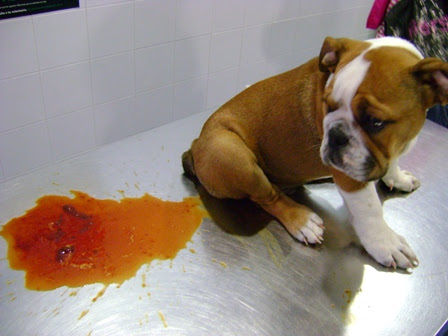A University of Sydney study has found that around 20,000 canine parvo virus cases occur in Australia each year. Nearly half of these cases (40-45%) result in death through euthanasia or the disease itself.
Parvovirus was first detected in 1978 and infects all breeds of dogs. Parvovirus is passed from dog to dog via direct contact, contact with infected faecal material, or the presence of virus within the environment for up to 12months. It can also be spread on people’s footwear or clothing if they come in contact with an infected dog. The virus infects rapidly dividing cells of the gastrointestinal tract and bone marrow, causing them to die and shed. This causes significant bloody diarrhoea, vomiting, lethargy, collapse, low red blood cell levels, low blood protein and eventual death.

There is no cure for parvovirus, instead only life-nourishing supportive therapy can be administered while the body tries to eradicate the virus. Treatment includes iv fluid therapy, gastro-protectants, anti-nausea drugs, antibiotics to combat secondary bacterial infection, pain relief, tube feeding (naso-gastric or oesophageal) to ensure serum protein levels and regular bathing and bed changes to remove the bloody diarrhoea and prevent skin sores/scalding.
The average cost to treat parvovirus cases is $1500 per patient, with some cases costing up to $3000 depending on the strain of parvovirus and age and health status (genetics/nutrition) of the dog.
A survey published recently in the Transboundary and Emerging Disease found that the majority of parvo cases occur in rural, remote and lower socioeconomic areas of Australia. There is a strong link between the cost of treatment and the rate of euthanasia. Higher costs were linked with pet owners opting for euthanasia instead of seeking treatment.
Parvovirus infection can be prevented by ensuring that your pets have regular annual vaccinations and that all puppies finish their course of puppy vaccinations. A puppy should have its first vaccination between 6-8weeks, then monthly until the final vaccine is administered between 14-16weeks. In Launceston high risk areas include Mayfield, Rocherlea, Ravenswood, Waverley and St Leonards, however cases have been reported from all suburbs and it is important that vaccines are kept up to date.
Source: The Australian Veterinarian Winter Edition Issue 4 2019.
